Pallet Inverter Safety Tips for Canada Plants Facing Pallet Standard Switching
Are you running a Canadian facility that constantly deals with shipments from both the US and Europe? You know the headache. US pallets (like the GMA) and EU pallets (like the EUR) have different dimensions. Manually transferring heavy loads from one pallet to another is slow, back-breaking, and a major safety risk for your team. You worry about injuries, product damage, and the constant drain on productivity. It feels like you're stuck between two different worlds, and your warehouse is paying the price.
The solution is to use a pallet inverter, but this powerful machine introduces its own safety challenges. The key to safely managing mixed pallet standards in a Canadian plant is a combination of choosing the right pallet inverter with adjustable clamping, implementing strict operational protocols, providing thorough, certified operator training, and adhering to a rigorous preventative maintenance schedule. These steps ensure compliance with Canadian safety regulations and protect your most valuable asset: your people.
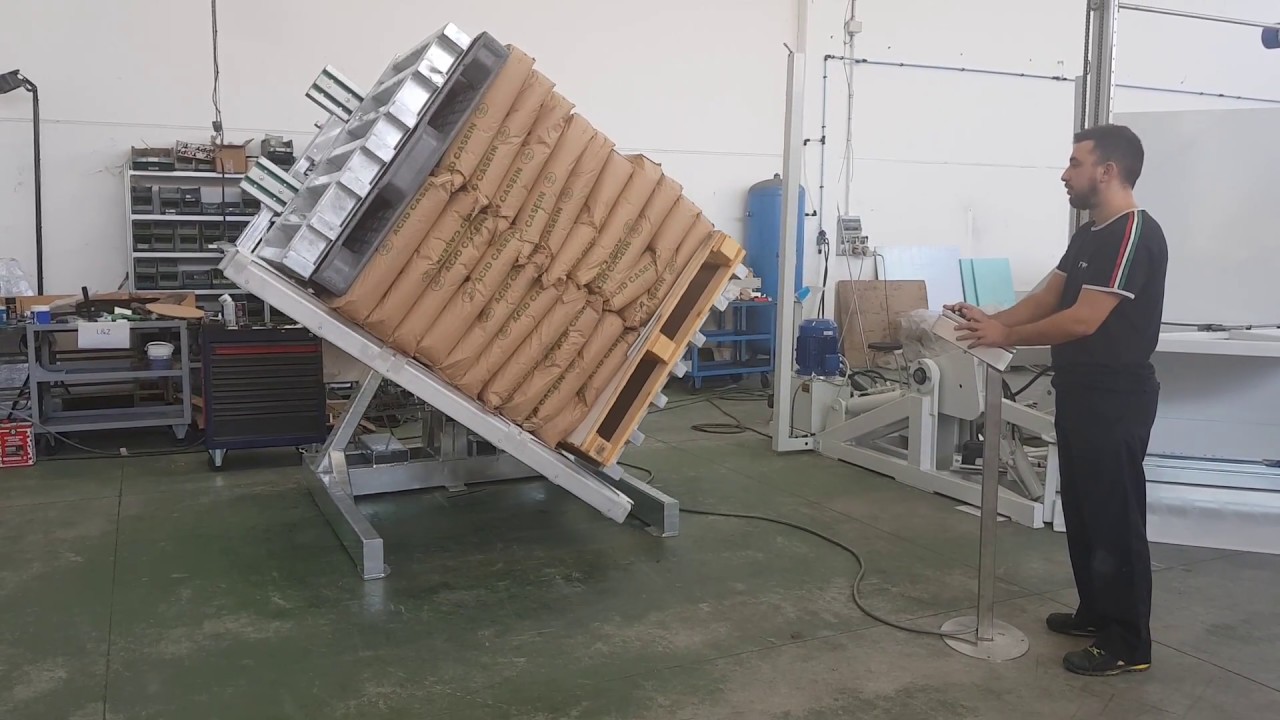
I've seen this exact problem in warehouses from British Columbia to Nova Scotia. The pressure to keep logistics flowing smoothly is immense. But taking shortcuts, especially when it comes to switching pallet types, is a recipe for disaster. The good news is that you don't have to choose between efficiency and safety. A pallet inverter is a fantastic tool, but like any powerful piece of equipment, it demands respect and a solid safety plan. Let's walk through the essential tips I've learned over my years in this business to make sure your pallet switching process is both fast and safe.
How do you choose the right pallet inverter for mixed pallet standards?
Your team is struggling to keep up with pallet transfers. One minute they're handling a shipment on a 48x40 inch US pallet, the next it's a 1200x800 mm Euro-pallet. You're considering a pallet inverter, but you're worried about buying a machine that can't handle the variety. Investing thousands in a piece of equipment that only solves half the problem would be a massive waste of capital and wouldn't eliminate the risks of manual handling.
The right pallet inverter must have an adjustable clamping system and a wide opening range to accommodate both US and EU pallet dimensions without damaging the product. Look for models with pressure sensors that automatically adjust the clamping force. This prevents crushing delicate goods while still securing heavy, unstable loads. Also, consider the loading method; a floor-level, ramp-loaded machine is often more versatile and safer than one that requires a forklift for every cycle.
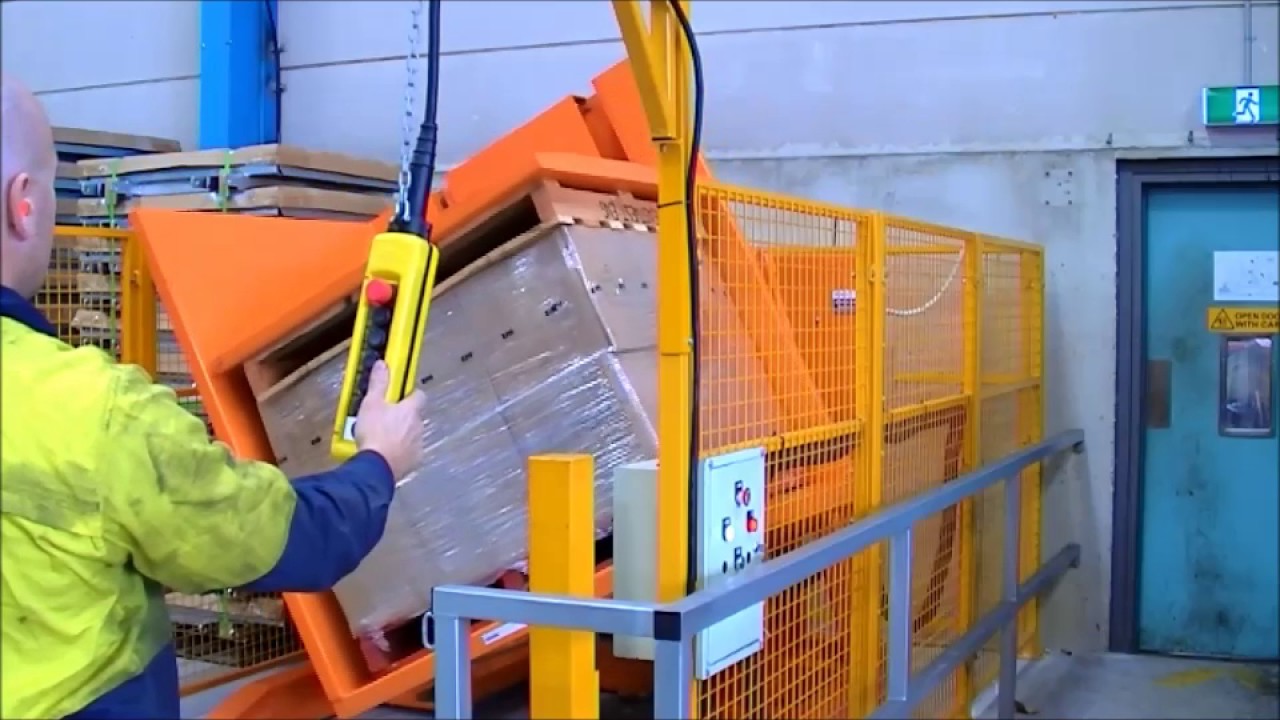
Dive Deeper: Matching the Machine to Your Canadian Operations
Choosing a pallet inverter isn't just about whether it can tilt a load. It's about how it fits into your specific workflow, your facility's layout, and the types of products you handle. For Canadian plants dealing with international goods, flexibility is the most important feature.
Assessing Your Load and Pallet Types
First, document every type of pallet you handle. Don't just think US vs. EU. Note the exact dimensions, weight capacities, and construction (wood, plastic, metal). Do you also handle half-pallets or custom-sized skids? Your potential pallet inverter needs to accommodate the largest and smallest, and the heaviest and lightest, of your loads. A machine with a limited opening or a fixed clamping pressure is not the right choice for a dynamic environment. I always advise clients to measure everything and even send sample pallets to the equipment manufacturer for testing.
Inverter Types and Their Applications
There are several types of pallet inverters, and each has its pros and cons. Understanding them is key to making a good investment.
| Inverter Type | How it Works | Best For | Considerations for Mixed Pallets |
|---|---|---|---|
| 180° Inverter (Ramp Loaded) | The load is placed in a chamber, clamped, rotated 180°, and the old pallet is removed from the top. | Versatile, good for boxes, bags, and pails. Allows easy pallet exchange at ground level. | Excellent. The adjustable clamping and large chamber can easily handle varying pallet sizes. |
| Pallet Changer (Side Push) | Pushes the load from one pallet to an adjacent one. No inversion. | Stable, uniform loads like canned goods. Fast cycle times. | Less ideal. Can struggle with uneven loads and different pallet heights. Alignment is critical. |
| 95°-110° Tipper | Tilts the load back so the pallet can be removed. | Frozen goods, heavy-duty applications where full inversion isn't needed. | Can work, but requires careful operation. The load rests on the side, so stability is key. |
| Free-Standing Inverter (Forklift Loaded) | Requires a forklift to load and unload. | High-volume operations where forklifts are always available. | Good flexibility, but relies heavily on forklift operator skill and creates more traffic. |
For most Canadian facilities with mixed standards, the 180° ramp-loaded inverter is the champion. It offers the best combination of safety, flexibility, and ease of use. An operator can load it with a simple pallet jack, reducing reliance on forklifts and minimizing traffic in busy areas.
What are the key safety features to look for in a pallet inverter?
You've found a pallet inverter that fits your budget. It seems simple enough. But you have this nagging feeling. What if an operator gets their hand caught in the clamping mechanism? What happens if a hydraulic hose bursts mid-cycle? The thought of a multi-ton load crashing to the floor is terrifying, not just for the product loss, but for the potential for a life-altering injury. A low price tag can be tempting, but it often means critical safety features have been left out.
A safe pallet inverter must be equipped with non-negotiable safety features compliant with Canadian standards (like CSA Z432). This includes full physical guarding, such as perimeter safety fencing with interlocked access gates. It must also have electronic safety systems like light curtains that immediately stop the machine if a person enters the operational area. Finally, look for dual-channel safety circuits, clearly marked emergency stop buttons, and hydraulic velocity fuses to prevent a sudden drop in case of a hose failure.
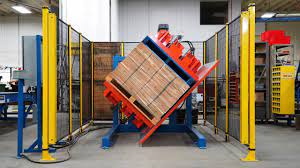
Dive Deeper: A Layered Approach to Machine Safety
Thinking about safety shouldn't be an afterthought; it should be the foundation of your purchasing decision. When I consult with factory owners like Javier, I explain that modern machine safety is about creating multiple layers of protection. If one layer fails, another is there to prevent an accident. This is especially true for powerful hydraulic equipment operating in a busy Canadian warehouse.
Layer 1: Physical Guarding - The First Line of Defense
This is the most basic and effective safety measure. A pallet inverter's moving parts create significant pinch, crush, and shear hazards.
- Perimeter Fencing: A robust fence, at least 2 meters high, should completely enclose the machine's operating area. This creates a clear "danger zone."
- Interlocked Gates: Any access gate in the fence must have a safety interlock switch. If the gate is opened, the switch sends a stop signal to the machine's control system, cutting power to the motors and hydraulics. The machine should not be able to restart until the gate is closed and a reset button is pressed outside the guarded area. This prevents someone from being trapped inside when the machine starts.
Layer 2: Presence-Sensing Devices - The Electronic Guardian
Sometimes, a physical barrier isn't enough or isn't practical for the entire operational cycle.
- Safety Light Curtains: These are curtains of infrared beams placed at the machine's loading and unloading points. If any part of a person's body breaks a beam while the machine is in a hazardous state, it triggers an immediate stop. They provide protection while allowing for easy access when the machine is in a safe condition. In Canada, these must be Type 4 devices for high-risk applications.
- Pressure-Sensitive Mats: Placed on the floor around the machine, these mats will detect an operator's presence and prevent the machine from cycling. They are excellent for defining a specific safety zone.
Layer 3: Machine Control and Emergency Systems
These features are built into the machine itself to ensure safe operation and provide a way out if things go wrong.
- Two-Hand Controls: For certain operations, requiring the operator to press two buttons simultaneously ensures their hands are away from moving parts.
- Emergency Stops (E-Stops): These must be red, mushroom-shaped buttons, easily accessible from any point around the machine. Pushing one should immediately halt all hazardous motion.
- Hydraulic Safety: Ask the manufacturer about velocity fuses or pilot-operated check valves on the hydraulic cylinders. These are critical components that prevent the clamping tables or the entire load from falling if a hydraulic line ruptures. This single feature has prevented countless serious incidents.
Buying a machine with these layered safety systems is a direct investment in your plant's compliance with provincial regulations (like Ontario's OHSA) and, more importantly, in your workers' well-being.
How can you train your Canadian workforce for safe pallet inverter operation?
You've invested in a state-of-the-art pallet inverter with all the best safety features. The machine is installed and ready to go. But you know that the most advanced safety system is useless if the operator doesn't know how to use it properly. You worry that an untrained or complacent employee might try to bypass a guard, overload the machine, or fail to conduct pre-use checks, leading to the very accident you tried so hard to prevent.
Effective training is the critical link between a safe machine and a safe workplace. Your training program, documented and specific to your Canadian plant, must cover more than just pressing "start." It must include a pre-operation inspection checklist, procedures for safe loading and unloading, understanding the machine's capacity limits, and hands-on drills for emergency stop and shutdown procedures. All operators must be certified internally, with regular refresher courses to prevent complacency.
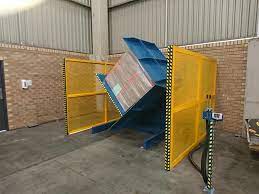
Dive Deeper: Building a Culture of Safety Through Training
I've seen multi-million dollar factories brought to a standstill by a single incident caused by human error. Training isn't a one-time event; it's an ongoing process of building competence and a deep-seated culture of safety. For a machine like a pallet inverter, this is non-negotiable. Your program should be structured, documented, and rigorous.
Step 1: The "Why" - Understanding the Risks
Don't just show them which buttons to press. Start by explaining the why behind the safety rules. Use real-world examples (without being overly graphic) of what can go wrong. Explain the forces involved—the clamping pressure, the weight of the loads, the speed of rotation. When operators understand the potential energy and the specific hazards (pinch points, crush zones), they are far more likely to respect the machine and the procedures. Tie this directly to their responsibilities under Canadian occupational health and safety laws, which emphasize the worker's right to know and their role in workplace safety.
Step 2: The "How" - A Detailed Operational Checklist
Develop a standard operating procedure (SOP) that operators must follow for every cycle. This should be a laminated checklist kept at the machine's control panel.
| Training Module | Key Learning Points | Verification Method |
|---|---|---|
| Pre-Operation Inspection | Check for hydraulic leaks, damaged guards, functioning E-stops, clean sensors/light curtains. | Operator signs off on a daily log sheet before first use. |
| Load Assessment | Verify load weight is within capacity. Check for load stability and proper stacking. | Visual confirmation and check against shipping documents. |
| Safe Loading | Proper centering of the pallet. Ensuring the load is fully within the machine's chamber. | Supervisor observation during initial training. |
| Machine Operation | Correct sequence of controls. Understanding what each light and alarm means. | Hands-on demonstration and practice. |
| Emergency Procedures | Location and use of all E-stops. Procedure for power loss. How to safely handle a stalled mid-cycle machine. | Timed drills and practical tests. |
| Lockout/Tagout (LOTO) | How and when to perform LOTO for cleaning, jam clearing, and maintenance. | Certification in your plant's specific LOTO procedure. |
Step 3: Certification and Refresher Training
No one should be allowed to operate the pallet inverter until they have completed the full training program and passed a practical test administered by a qualified supervisor or trainer. Keep a record of this certification.
But skills degrade and complacency creeps in. Schedule mandatory refresher training at least once a year, and immediately after any near-miss or safety incident. This reinforces good habits and keeps safety at the forefront of everyone's mind.
What maintenance practices are critical for pallet inverter safety?
Your new pallet inverter has been running smoothly for six months, a real boost to your plant's efficiency. But lately, you've noticed a small hydraulic fluid leak near one of the fittings. An operator mentions the machine seems a bit "slower" than it used to be. You're tempted to ignore it—the machine is still working, and production is the priority. But you know that small problems in heavy machinery can quickly become catastrophic failures.
A proactive and preventative maintenance schedule is essential for keeping a pallet inverter safe and reliable. This isn't just about fixing things when they break; it's about preventing them from breaking in the first place. A well-documented program of daily operator checks, weekly inspections, and monthly or quarterly service by trained personnel is critical. This ensures that hydraulic systems, safety interlocks, and structural components remain in perfect working order, preventing unexpected and dangerous failures.
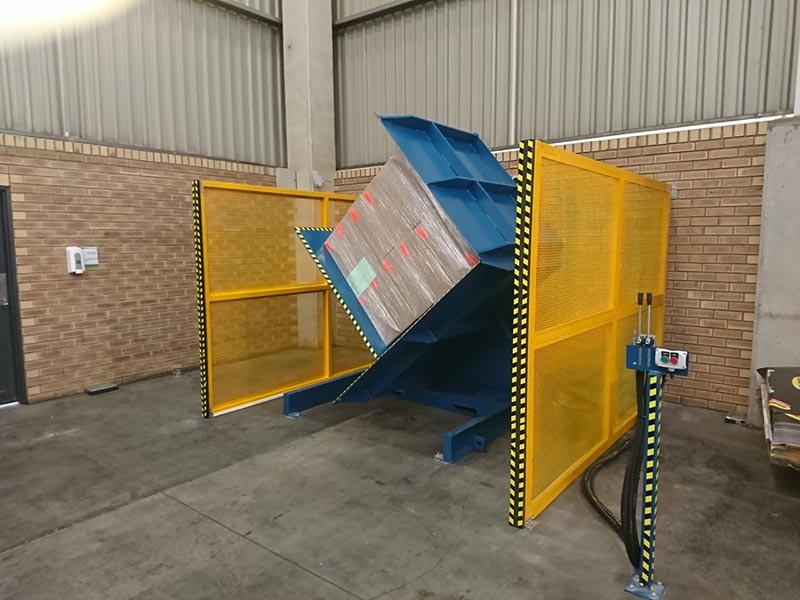
Dive Deeper: Maintenance as an Investment, Not a Cost
I learned early in my career as an engineer that the factory floor is an unforgiving environment. Machines that are neglected will fail, and they always seem to fail at the worst possible moment. For a leader like Javier, who understands the numbers, a good maintenance program has a clear ROI. It reduces unplanned downtime, extends the life of the asset, lowers the risk of costly accidents, and ensures compliance with Canadian safety regulations that mandate equipment be kept in good condition.
Creating a Tiered Maintenance Schedule
A robust maintenance plan has multiple tiers, involving different people with different levels of skill.
-
Tier 1: Daily Operator Care (5 minutes)
This is the foundation. The person who runs the machine every day is the most likely to notice small changes. Before their shift, they should perform a quick inspection.- Visual Check: Look for any visible damage, leaks, or loose parts.
- Function Test: Test the E-stop button. If there's a light curtain, test it by breaking the beam.
- Cleanliness: Wipe down sensors and control panels. A clean machine is easier to inspect.
This should be a formal process with a signed logbook.
-
Tier 2: Weekly/Monthly In-House Checks (1 hour)
This is a more detailed inspection performed by a lead operator or an in-house maintenance technician.
| Frequency | Checkpoint | Action Item |
|---|---|---|
| Weekly | Hydraulic Fluid Level | Top up if necessary. Note any significant drops. |
| Weekly | Safety Interlock Switches | Manually activate each gate/door to ensure it stops the machine. |
| Weekly | Control Buttons & Lights | Check for wear and tear; ensure all indicator lights work. |
| Monthly | Hydraulic Hoses & Fittings | Inspect for cracks, abrasions, and leaks. Tighten fittings if needed. |
| Monthly | Structural Welds & Bolts | Visually inspect for any signs of stress or fatigue. Check bolt tightness. |
| Monthly | Lubrication | Grease all specified points according to the manufacturer's manual. |
- Tier 3: Annual Professional Service
Once a year, it's wise to have a certified technician, ideally from the manufacturer like SHJLPACK, perform a comprehensive service. They can perform tasks like changing the hydraulic fluid and filters, pressure testing the system, and verifying that all safety circuits are functioning to their original specifications. This provides peace of mind and often catches developing issues that are not yet visible.
This structured approach turns maintenance from a reactive chore into a proactive strategy for safety and reliability.
My Insights
When I started my journey in a packing machine factory, I was just an engineer focused on gears and motors. But I quickly learned that the best machine design in the world is meaningless if it isn't safe for the person operating it. I remember visiting a client in Canada, a large food distributor. They were manually transferring massive loads of goods from EU pallets to North American ones. I saw the strain on the workers' faces and the constant risk of a pallet collapsing.
They thought a pallet inverter was just a "nice to have." I sat down with the plant manager and we didn't just talk about cycle times. We talked about the cost of one serious back injury. We talked about lost time, insurance claims, and the impact on team morale. We talked about their legal obligations to provide a safe workplace.
When they finally installed a proper 180° inverter with full safety guarding, it was a transformation. It wasn't just about efficiency. It was about showing their employees that their well-being mattered. That experience solidified my mission. SHJLPACK is more than a factory. It's a platform to share the lessons I've learned. A safe operation is a profitable operation. Investing in the right, safe equipment isn't an expense; it's the foundation of a sustainable and successful business.
Conclusion
Properly selecting, guarding, and maintaining a pallet inverter, combined with rigorous operator training, is the only way to safely and efficiently manage mixed US and EU pallet standards in Canada.




